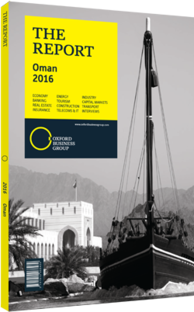Qais Saud Al Zakwani, Executive Director, Authority for Electricity Regulation: Interview

Interview: Qais Saud Al Zakwani
How has growing energy consumption supported the introduction of cost-reflective tariffs, and how can energy efficiency be further enhanced?
QAIS SAUD AL ZAKWANI: Cost-reflective tariffs are in their final stages of implementation and will need to be approved by the government council that is responsible for tariff amendments. Growing energy consumption is one of the drivers of this change, but we are also looking to implement demand and consumption signals. The current flat tariff does not incentivise consumers to efficiently manage the use of their electricity. On the contrary, the impact of their consumption on the grid gets magnified during peak times. Usage patterns,and the fact that we have many energy-intensive customers,underline the need to introduce price signals. We are also seeing an influx of industrial and other heavy usage customers, so through cost-reflective tariffs we are hoping to shift some of their electricity use from times of peak demand to off-peak hours. We are looking to introduce the cost-reflective tariffs to the government and commercial segments first and the residential segment later.We have been requesting cost-reflective tariffs since 2011, and the main driver here has always been to allocate subsidies to people who need them the most. Providing the population with cheap electricity only encourages a misuse of the resource rather than incentivising customers to use it more efficiently. Infrastructure is also very important for implementing cost-reflective tariffs. We will have to move away from the current metering system that we are using and begin to shift toward digital metering to be able to accurately map electricity demand.
By what mechanisms can sustainable and renewable energies be integrated into the power grid?
ZAKWANI: In the past we only issued licenses to power generators; as of 2015 we have issued our first licence to generate electricity using renewables. It is a project that is already up and running in Salalah and is a mixed solar-diesel hybrid. Other projects include a 50-MW wind project in Thumrait, another on the island of Masirah, and we will begin tendering for a large-scale solar project in the interior of the country. These all form part of the 2040 Energy Policy, which aims to generate approximately 10% of all energy needs from renewable sources. That being said, we also need to ensure certain technical parameters are met. Due to the intermittent nature of renewable energy, we must manage the extra strain that it puts on the grid and ensure that it is not overloaded. We are currently working on the 2040 Energy Policy, and like any sound energy strategy it needs to be diverse, efficient and consider the security of supply. The plan for renewables will be outlined once the policy is complete and takes effect.
What further steps can be taken to broaden and develop a coherent policy framework to encourage greater private sector investment?
ZAKWANI: Our power plants were built by the private sector, and we have a long track record of using this model to generate electricity. We are now looking at the possibility of privatising Muscat Electricity Distribution Company. Privatisation has always been seen as an objective so we do have the framework, but we just need the right timing to go forward with the plans. Privatisation brings know-how and technologies to the sector, which complements our aspiration to ensure that our electricity sector is functioning to international standards. To reach these standards and promote efficiency we must make sure that we have the most qualified people to run these networks, identify bottlenecks and make suggestions for improvement. International private participants can bring this know-how into the market and share their knowledge with local players in order to help us achieve our international benchmarks.
You have reached the limit of premium articles you can view for free.
Choose from the options below to purchase print or digital editions of our Reports. You can also purchase a website subscription giving you unlimited access to all of our Reports online for 12 months.
If you have already purchased this Report or have a website subscription, please login to continue.

